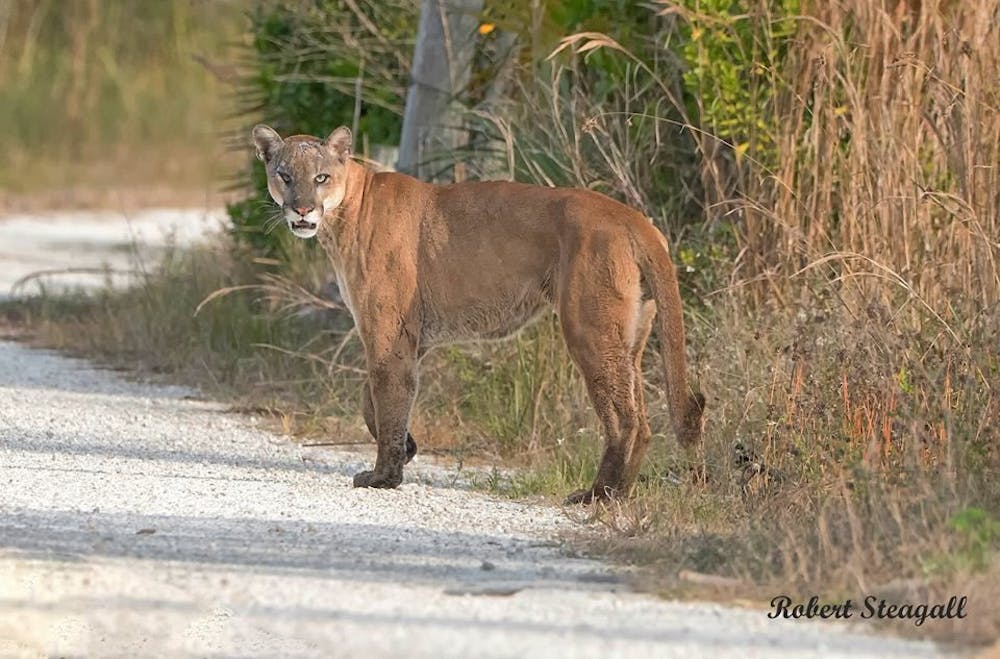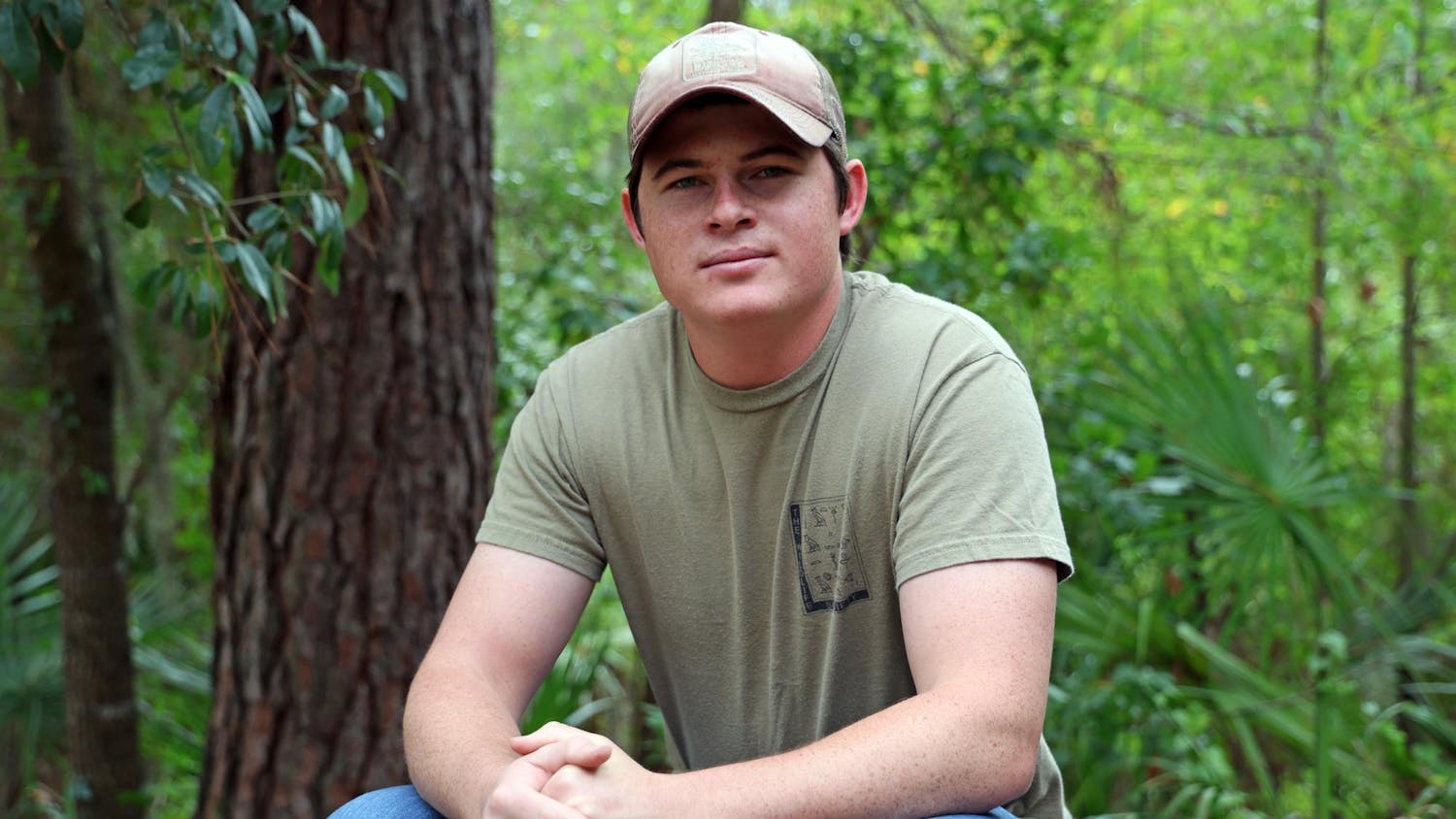Faced with threats from heart defects to habitat loss, Florida panthers have struggled to live throughout the years.
But recent research may give these endangered animals another chance.
Researchers from UF’s Department of Wildlife Ecology and Conservation and the Florida Fish and Wildlife Conservation Commission conducted a study to find solutions for endangered panthers.
The study found improving the panthers’ genetic diversity by breeding with Texas pumas helped them not only survive but thrive, said UF wildlife ecology and conservation professor Madan Oli. The study is a synthesis of 30 years of work.
This is just one of the projects UF has done with the Florida Fish and Wildlife Conservation Commission, said FWC Communications Director Kelly Richmond.
“We collaborate with UF on a variety of different projects,” she said. “It’s a good partnership.”
The problem with Florida panthers stems back to before the mid-1990s when the population was very small — around 20 to 30 panthers in South Florida, Oli said. In addition, the panthers had health problems like heart issues and more.
Wildlife managers decided they needed to do something to recover the population.
They decided to conduct an experiment in which they brought eight pumas from Texas to Florida, Oli said. Five of these pumas ended up breeding with the panthers to produce hybrid offspring that created more genetic diversity, which is how varied a gene pool is. In addition, the number eight seemed like a good number for this research, he said.
“Why not more? Why not less?” Oli said. “If you bring in too many individuals from Texas, then what could happen is that Texas genes could potentially dominate Florida panther genes.”
And if one or two Texas pumas were brought in and they happened to die, then the experiment couldn’t happen, he said.
The results showed an increase in the Florida panther population size from 20 to 30 in 1995 to 120 to 230 today, he said. This was from creating more genetic diversity by not inbreeding.
It was found those with mixed ancestry fared better in terms of survival and reproductive success, because more genetically diverse animals tend to be healthier.
“And because they are healthier, they survive better and reach a reproductive age,” he said.
The reproductive age for females is about 2.5 to 3 years, but for males it is 3.5 to 4.
To Oli, these results give hope.
“The significance [of this research] is that there’s hope for endangered species,” he said.
Research also looked for any indication of inbreeding returning to the population and found the best solution might be bringing five females every 20 years. However, this is not a proven fact, Oli said.
“It’s not like we’re suggesting this be done. What we are suggesting is to keep an eye on the population,” he said.
However, conserving the panthers’ habitat is the key to helping this endangered species, he said. Without a good habitat, diversifying the genetics of this species won’t work. Florida panthers live in a mixture of all different environments — from forests to wetlands to swamps. They use all the available resources of their respective environments.
To help conserve the panthers’ habitat, Oli discourages deforestation. In addition, Oli encourages people to be more welcoming to panthers and disproves any misconceptions the public may have of the violence of the animals.
“One misconception we hear quite frequently is that by bringing in excess genes, we have created a monster,” he said. “That’s a myth and there’s absolutely no science to back it up.”
Even though work still needs to be done in the future to help these animals, the research still gives hope and showed progress.
“The experiment worked,” Oli said. “And we know that because now the panthers are healthier, happier, and the population increased.”
An endangered Florida panther.






